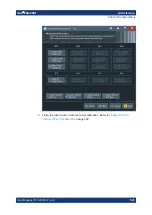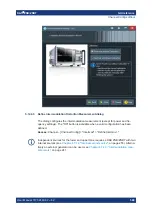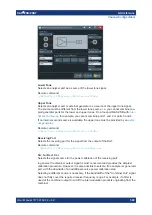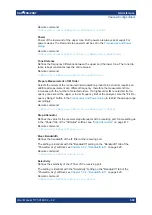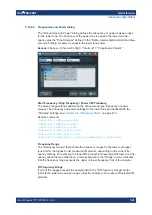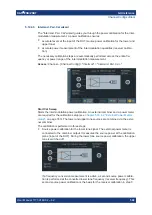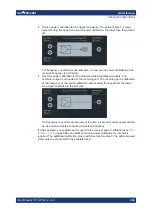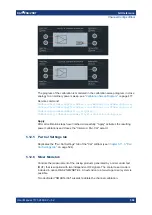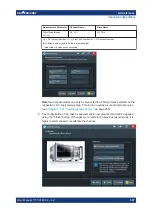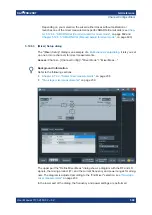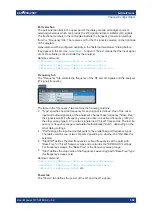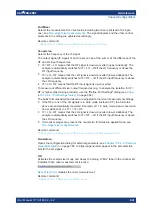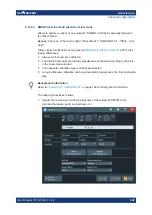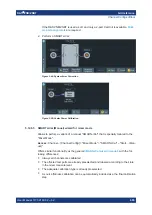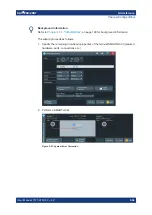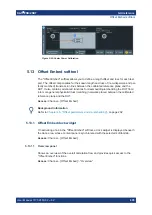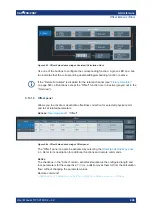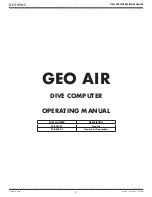
GUI reference
R&S
®
ZNB/ZNBT
591
User Manual 1173.9163.02 ─ 62
5.12.4.4
Frequencies and Power dialog
The "Frequencies and Power" dialog defines the (frequency or power) sweep ranges
for the lower tone. The frequency of the upper tone is equal to the lower tone fre-
quency plus the "Tone Distance" defined in the "Define Intermodulation Distortion Mea-
surement" dialog. Its power is equal to the lower tone power.
Access:
Channel – [Channel
Config] > "Intermod" > "Frequencies Powers"
Start Frequency / Stop Frequency / Power CW Frequency
The sweep range settings depend on the active sweep type (frequency or power
sweep). The frequency and power settings for the lower tone are identical with the
"Stimulus" settings, see
Chapter 5.8, "Stimulus softtool"
Remote command:
[SENSe<Ch>:]FREQuency:STARt
[SENSe<Ch>:]FREQuency:STOP
[SENSe<Ch>:]FREQuency[:CW]
SOURce<Ch>:POWer<PhyPt>:STARt
SOURce<Ch>:POWer<PhyPt>:STOP
SOURce<Ch>:POWer<PhyPt>[:LEVel][:IMMediate][:AMPLitude]
Frequency Range
The "Frequency Range" table shows the frequency ranges for the lower and upper
tone and for the highest-order measured IM product, depending on the current fre-
quency settings. For example, the lower IM3 product is measured at the lower tone fre-
quency minus the tone difference. A red background in the "Range" column indicates
that the frequency range exceeds the upper or lower frequency limit of the analyzer.
Fit Frequency Range
If one of the ranges exceeds the analyzer limits, the "Fit Frequency Range" button
restricts the lower tone sweep range so that the analyzer can measure all selected IM
products.
Channel Config softtool











